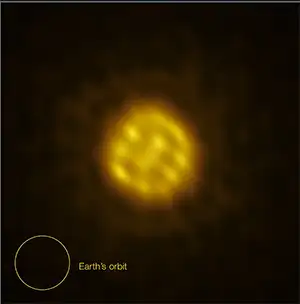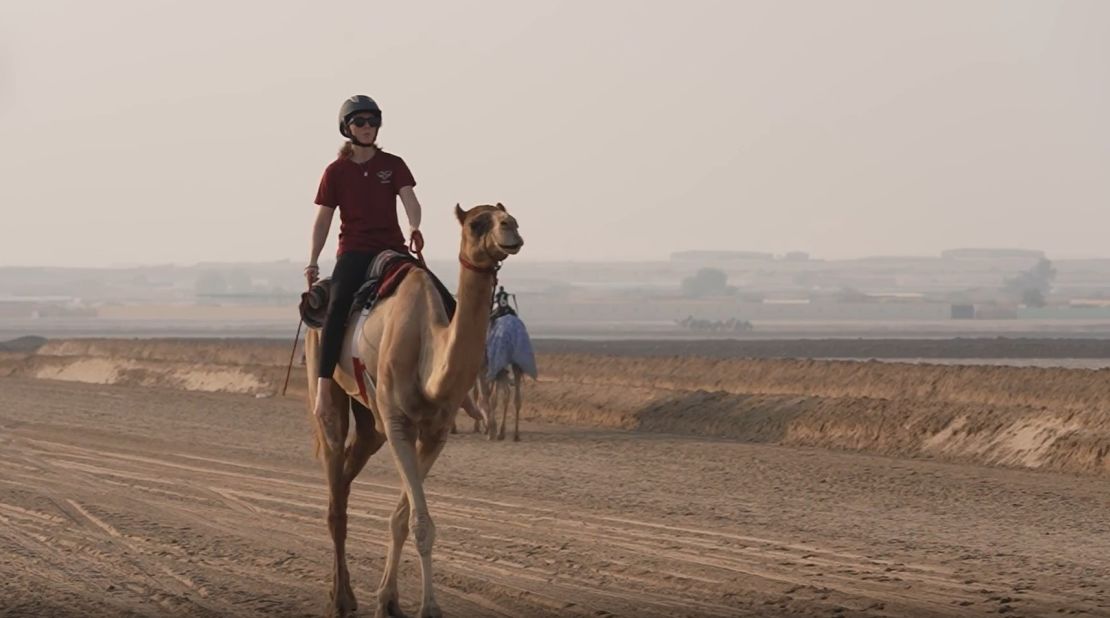A distant bursting star captured in stunning video

In an unprecedented move, astronomers have managed to capture detailed images of a star outside our solar system, including gas bubbles on its surface.
These images, showing giant bubbles of gas hotter than our sun, were taken from the star R Doradus.
Surprisingly, gas bubbles appear to be disappearing into the star’s interior at a faster rate than expected.
The bubbling face of R Doradus
“This is the first time the bubbling surface of a real star can be visualized in such a way,” noted study lead author Wouter Vlemmings, a professor from Chalmers University of Technology, Sweden.
“We never expected the data to be of such high quality that we could see so much detail of the conduction on the star’s surface.”
How stars release energy is a fascinating process. At their core, stars experience nuclear fusion. This incredible energy then rises towards the surface in the form of huge bubbles of hot gas – similar to the movement inside a lava lamp.
The bubbles eventually cool and fall back into the nucleus in a process known as convection.
The mixing motion of convection helps distribute heavy elements such as carbon and nitrogen into the star.
It is also believed to produce stellar winds that propel these objects into space, contributing to the birth of new stars and planets.
Transmission out of our star system
In an exciting first series, detailed observations of the motions of stars beyond our sun have been achieved, using the Atacama Large Millimeter/submillimeter Array (ALMA), jointly owned by the European Southern Observatory (ESO).
The target, R Doradus, a red giant star about 350 times the diameter of our sun, is a mere 180 light-years away in the constellation Dorado.
Given its large size and close proximity to Earth, R Doradus proved to be a suitable candidate for detailed observation. It is interesting that the star has a mass similar to the sun.
The researchers noted that convective bubbles have previously been observed in detail on the surface of stars, with the PIONIER instrument on ESO’s Very Large Telescope.
However, the new ALMA observatory tracks the motion of the bubbles in a way that was not possible before.
Close examination of granular structures
“Convection creates the fine granular structure visible on the surface of our sun, but is difficult to see in other stars,” explained study co-author Theo Khouri, a researcher at Chalmers.
“With ALMA, we have now not only been able to directly observe the changing particles – 75 times the size of our sun! – but also measure how fast they are moving for the first time.”

R Doradus cells appear to operate on a monthly cycle. This is much faster than expected based on the solar eclipse process.
“We still don’t know what the reason for the difference is. It seems that the performance changes as the star ages in ways we don’t yet understand,” explained Vlemmings.
Evolution of R Doradus and sun-like stars
Recent observations are important as they advance our understanding of how Sun-like stars mature into red giants such as the cool, massive and powerful R Doradus.
“It’s amazing that we can now directly look at details on the surface of stars so far away, and see physics that until now was only visible in our sun,” said Behzad Bojnodi Arbab, a PhD student at Chalmers who also participated in the. research.
See a sunny future
The red giant R Doradus provides a glimpse of what our sun might look like in about five billion years. As the sun ages, stars expand greatly, becoming cooler and more luminous as red giants.
During this phase, convection becomes a major process on their surface, where hot gas rises and cools, forming large particles of bubbling plasma.
This phase plays an important role in the distribution of elements in the stars and in space, improving interstellar.
Understanding how red giants like R Doradus evolve not only helps astronomers study distant stars but also sheds light on the fate of our solar system.
The research has been published in the journal Nature.
—
Do you like what you read? Subscribe to our newsletter for interesting articles, exclusive content and new updates.
Check us out on EarthSnap, a free app brought to you by Eric Ralls and Earth.com.
—
#distant #bursting #star #captured #stunning #video



